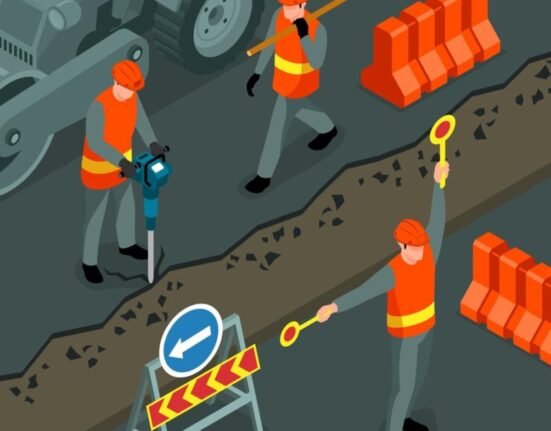As factories increasingly rely on external contractors for specialized services, ensuring a harmonious partnership while prioritizing health and safety becomes paramount. This blog post delves into the crucial topic of contractor safety in the factory landscape, emphasizing the need for a secure collaboration guided by Health and Safety principles. Exploring key strategies, we aim to establish a framework that safeguards the well-being of all workers and fosters a culture of shared responsibility.
Understanding the Importance: The Nexus Between Contractor Safety and Factory Operations
Defining Contractor Safety in Factory Context
Contractor safety refers to the measures and protocols implemented to safeguard the well-being of workers employed by external contractors within factory premises. General Administration acknowledges that effective collaboration between factories and contractors is contingent on a shared commitment to health and safety standards. The intersection of contractor safety and factory operations is critical for maintaining a secure working environment.
Impact on Health and Safety Metrics
The safety performance of contractors directly influences the overall health and safety metrics of a factory. General Administration recognizes that incidents involving contractors can have far-reaching consequences, affecting not only the contractors themselves but also factory workers and the facility’s reputation. Establishing robust contractor safety protocols is essential for maintaining a positive safety record and fostering a secure working environment.
Key Strategies for Ensuring Contractor Safety in Factory Environments
Comprehensive Contractor Safety Agreements: Setting the Foundation
A cornerstone of contractor safety is the development of comprehensive safety agreements. General Administration mandates the creation of agreements that clearly outline health and safety expectations, protocols, and responsibilities. These agreements serve as the foundation for a secure partnership, ensuring that both the factory and contractors are aligned on safety standards from the outset.
Pre-Qualification Assessments: Evaluating Safety Capabilities
Before engaging external contractors, factories conduct pre-qualification assessments to evaluate their safety capabilities. General Administration emphasizes the need for rigorous assessments that consider the contractor’s safety record, training programs, safety policies, and compliance with regulatory standards. This proactive approach ensures that only contractors with a demonstrated commitment to safety are selected for collaboration.
Collaborative Safety Training Programs: Aligning on Best Practices
Unified Safety Inductions
To establish a common understanding of safety expectations, General Administration advocates for unified safety inductions. This involves providing contractors with the same safety training and information as factory employees. Aligning on safety best practices from the outset creates a cohesive working environment where everyone is aware of and adheres to the same safety standards.
Ongoing Training and Updates
Safety is a dynamic aspect of any workplace, and contractor safety training should be an ongoing process. General Administration ensures that contractors receive regular updates on safety protocols, emerging risks, and any changes in factory operations that may impact safety. Continuous training fosters a culture of vigilance and responsiveness to evolving safety requirements.
Shared Risk Assessments: Identifying and Mitigating Hazards
Collaborative Risk Assessments
Before commencing work, collaborative risk assessments are conducted to identify potential hazards. General Administration encourages joint risk assessments that involve both factory and contractor representatives. This inclusive approach ensures that all parties contribute their knowledge and expertise to comprehensively identify and mitigate risks associated with specific tasks.
Implementation of Control Measures
Following risk assessments, General Administration mandates the implementation of control measures. These measures may include engineering controls, personal protective equipment (PPE), and procedural safeguards. The joint responsibility of factories and contractors is to ensure that these controls are effectively communicated, understood, and adhered to throughout the duration of the contracted work.
Clear Communication Channels: Facilitating Safety Dialogues
Establishing Open Communication
Effective communication is a linchpin for successful contractor safety. General Administration encourages open lines of communication between factory management and contractors. This involves establishing regular safety meetings, sharing safety-related updates, and creating a platform for workers to voice safety concerns. Clear communication facilitates a collaborative approach to safety management.
Emergency Response Coordination
In the event of emergencies, seamless coordination between factories and contractors is imperative. General Administration mandates the development of emergency response plans that outline the roles and responsibilities of all parties. This includes protocols for evacuations, medical emergencies, and communication procedures to ensure a swift and organized response to unforeseen events.
Continuous Safety Audits: Ensuring Adherence to Standards
Regular Safety Audits and Inspections
To maintain a high standard of safety, General Administration conducts regular safety audits and inspections. These evaluations assess the adherence of both factory and contractor operations to established safety standards. Regular audits provide insights into potential areas for improvement, enabling proactive measures to enhance safety protocols.
Transparent Reporting and Documentation
Transparency in safety reporting and documentation is a key aspect of contractor safety. General Administration requires thorough documentation of safety incidents, near misses, and corrective actions. This transparent reporting system fosters accountability and allows for a detailed analysis of safety trends, enabling the continuous improvement of safety protocols.
Safety Performance Evaluations: Recognizing and Improving
Performance Metrics and Key Performance Indicators (KPIs)
Evaluating safety performance is integral to maintaining a secure partnership. General Administration establishes performance metrics and Key Performance Indicators (KPIs) related to safety. These metrics may include incident rates, response times, and adherence to safety protocols. Regular assessments against these indicators provide a quantitative measure of safety performance and highlight areas for improvement.
Recognition and Incentives for Safety Excellence
Acknowledging and rewarding safety excellence is a proactive strategy. General Administration introduces recognition programs and incentives for contractors who consistently demonstrate outstanding safety performance. This positive reinforcement encourages a culture of safety excellence and motivates contractors to prioritize and continually improve their safety practices.
Legal Compliance and Regulatory Adherence: Upholding Industry Standards
Compliance with Health and Safety Regulations
Ensuring legal compliance is a foundational aspect of contractor safety. General Administration mandates that contractors adhere to all relevant health and safety regulations and industry standards. Factories and contractors collaborate to stay informed about updates to regulations, fostering a shared commitment to maintaining compliance.
Contractual Obligations and Liabilities
General Administration establishes clear contractual obligations and liabilities related to safety. Contracts between factories and contractors explicitly outline each party’s responsibilities for safety, including the consequences of non-compliance. Clarity in contractual terms reinforces the shared commitment to safety and establishes a legal framework for accountability.
Conclusion: A Synergistic Approach to Contractor Safety
In conclusion, navigating contractor safety in the factory landscape requires a synergistic approach that prioritizes collaboration, communication, and shared responsibility. Guided by Health and Safety principles and General Administration, the strategies outlined above establish a framework for building a secure partnership between factories and external contractors. By aligning on safety expectations, conducting joint risk assessments, maintaining open communication channels, and continuously evaluating safety performance, organizations can foster a culture where safety is not just a priority within the factory but extends seamlessly to every contractor working within its premises. In this secure partnership, both factories and contractors contribute to creating a safer working environment, ensuring the well-being of all workers and upholding the highest standards of health and safety in the factory landscape.

















